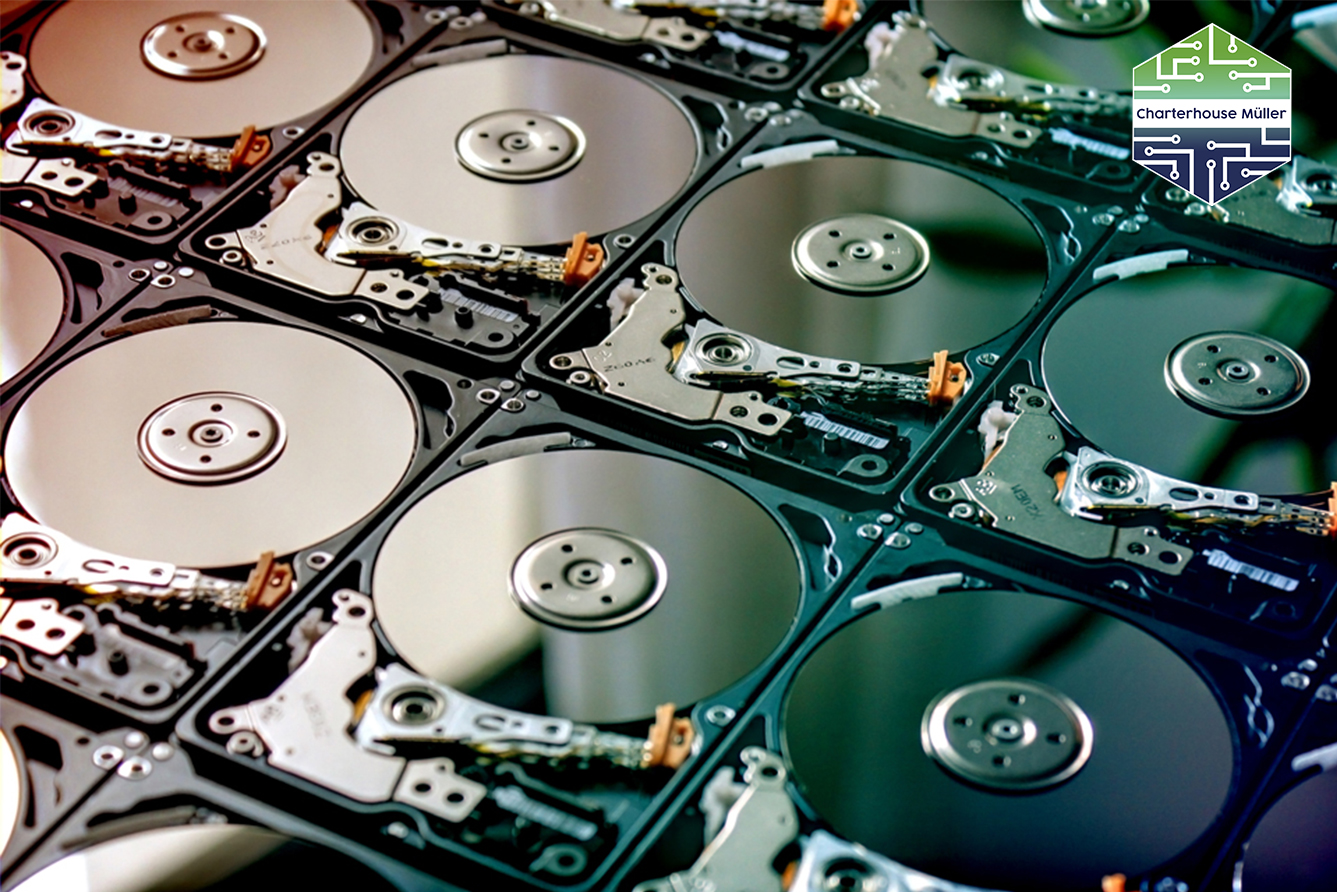
17 Jan Making the right choice – Hard Drive Destruction vs. Hard Drive Erasure
Safeguarding sensitive information has become a paramount concern for organisations. When it comes to retiring old hard drives, two primary methods have emerged as the frontrunners in ensuring data security: hard drive destruction and hard drive erasure. Each method has its pros and cons, and choosing the right one depends on the specific needs and preferences of the user.
The Art of Hard Drive Destruction
The Pros:
- Unrecoverable Data: Hard drive destruction involves physically damaging the storage medium beyond repair, rendering data irretrievable. This makes it an effective method for preventing any form of data recovery.
- Compliance with Regulations: Certain industries and regions mandate the complete destruction of data-containing devices as part of data protection regulations. Hard drive destruction ensures compliance with these rules and safeguards against potential legal repercussions.
- Simplicity and Certainty: The process of destroying a hard drive is straightforward and conclusive. Users can witness the destruction firsthand or obtain certificates of destruction, providing tangible proof of the data’s demise.
The Cons:
- Environmental Impact: The physical destruction of hard drives can generate electronic waste, contributing to environmental concerns. Proper disposal methods are necessary to mitigate the ecological footprint.
- Resource Intensity: The process of physically destroying hard drives can be resource-intensive and time-consuming. It may not be the most efficient option for organisations dealing with a large number of drives.
The Precision of Hard Drive Erasure
The Pros:
- Reusability of Hardware: Unlike hard drive destruction, erasure leaves the physical drive intact. This allows for the potential reuse or resale of the hardware, contributing to sustainability efforts and reducing electronic waste.
- Time and Cost Efficiency: Erasure is generally quicker and more cost-effective than physical destruction, especially when dealing with a large number of drives. This makes it a practical choice for businesses looking to streamline their data disposal processes.
- Multiple Overwriting Algorithms: Advanced erasure tools employ multiple overwriting algorithms, ensuring that data is thoroughly and securely wiped from the drive. This reduces the risk of any residual data being recoverable.
The Cons:
- Potential for Data Recovery: While erasure is designed to be comprehensive, there is always a minimal risk of data recovery. This risk is especially relevant if the drive has bad sectors or is malfunctioning.
- Regulatory Compliance Challenges: Some industries or regions may have specific regulations that require physical destruction rather than erasure. It’s crucial to understand and comply with relevant laws to avoid legal complications.
Making the Right Choice
The decision between hard drive destruction and erasure ultimately depends on factors such as the level of security required, environmental considerations, and regulatory compliance. For organisations handling highly sensitive information or operating in regulated industries, hard drive destruction may be the preferred method. On the other hand, those prioritising sustainability, cost-effectiveness and the potential reuse of hardware may find hard drive erasure to be a more fitting solution.
In conclusion, both hard drive destruction and hard drive erasure play crucial roles in the realm of data security. The key is to assess individual needs, weigh the pros and cons of each method and implement a strategy that aligns with both security and sustainability goals. Whether shattering drives to pieces or meticulously wiping them clean, the goal remains the same: protect sensitive data from falling into the wrong hands.

